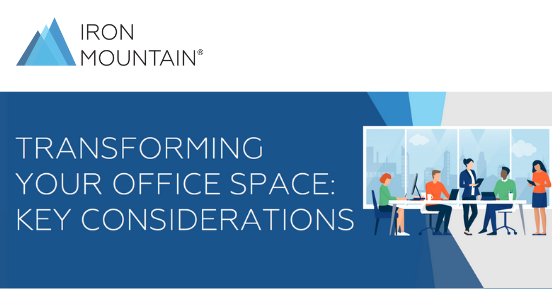Elevate the power of your work
Get a FREE consultation today!
Take a look at our latest research on how global organisations are rethinking workplace transformation strategies and building a resilient workforce.

Workplace transformation is a topic that’s usually top of mind for business leaders and real estate professionals. However, the last few years have elevated the conversation.
To get a good comparison of workplace transformation considerations and plans, we repeated our 2019 IDG survey. For a text-based version of our research, please scroll below this infographic.
We invite you to check out our research results to see how we can help you with your workplace transformation journey, or view the full IDG whitepaper.

In 2021, we re-surveyed a group of global decision-makers across various industries on the topic of workplace transformation. They answered questions about the process, goals, responsibilities, and outcomes of current and upcoming projects. Given the disruption of the pandemic, we sought to better understand how organizations may be rethinking their workplace transformation strategies.
In our research, we discovered how priorities have shifted for global organizations and what steps they’re taking to enable their modern workplace transformation (hint: virtual workforces are going to play a much bigger role).
The days of the traditional office concept are gone as we know it. Employees who have had the capability to work virtually from home have increasingly found enhanced work-life balance. As a result, leaders are having to change their approach to not only team management but also workplace efficiencies.
Workplace transformation projects look a lot different in 2021 than they did when we asked leaders about their plans in 2019. Back then, the majority were looking to acquire new real estate to best support their people, with visions that included carving out conference rooms and collaboration zones.
Now, leaders are redesigning their existing spaces to meet employees’ expectations and creating a more distributed real estate footprint that may require consolidations or relocation of properties to best support a workforce with changing priorities. At the same time, they are balancing the need to protect data and information in a way that doesn’t stymie productivity.
As leaders prioritize offering remote work options and flexible work environments, expanding and enhancing security around data and information management is a must.
Roughly 20% of employees want full remote arrangements but 37% still want at least some time in the office. It’s a complex environment for information management, and concerns about data and information security are high as a result.
Top concerns of those surveyed include:
When planning projects, leaders first ensure information is protected during a move or some kind of real estate transition. Often, physical space is freed up for higher-valued use for collaboration and connection, in a highly secure way.
Respondents who stated considerations as critical or high priority:
Achieving a paper-lite environment is highly important or critical to projects for 83% of leaders. They plan to reduce paper-based information from a third to a quarter by:
Leaders say a detailed assessment, by location, to eliminate unproductive space helps jumpstart these projects. New strategies can be developed for ongoing secure and compliant retention and disposition of files, records, IT assets, and other data media after the move is complete.
Through our Clean Start program, Iron Mountain helps you rethink your real estate by performing a complete assessment of your space. We design a plan to optimize the use of your space by securely destroying documents, IT assets and equipment that you no longer need to retain and securely store the rest, either on a temporary basis or permanently. Documents can be digitized and workflows automated to provide anytime, anywhere access for remote employees.
Visit IronMountain.com/cleanstart to get started.
Get a FREE consultation today!

